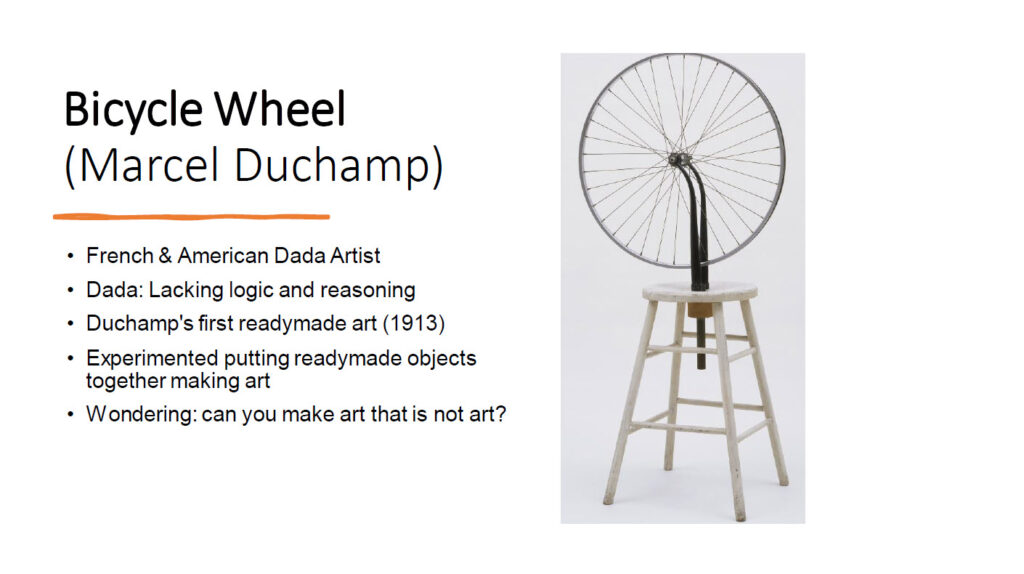




TITLE: Creating a Human Sense of Wonder: Famous Art Experiments
MEDIA: Art Exhibition Installation
CLASS: FMX 211 Media Arts: History and Theory
PROFESSOR: Timothy Ridlen
INSTITUTION: The University of Tampa
SEMESTER/TERM: Fall 2021
DESCRIPTION: For my final project, I was required to write a proposal for an art exhibition with specific art pieces covered in class and organized by a theme. I proposed an art exhibition that showcased the human drive to create, experiment, and innovate featuring artworks from Luigi Russolo, Marcel Duchamp, Douglas Huebler, Stelarc, and Ian Cheng. The name of the exhibition is Famous Art Experiments: Creating a Human Sense of Wonder. The five artists were from different eras (pre-World War I through today) that experimented with art and technology, creating intriguing art, and causing viewers to pause, ponder, and wonder. The eclectic arrangement encompassed art from key art movements – Futurist, Dada, Conceptual, Modern Performance Art, and Interactive Art. The exhibition would be arranged chronologically from oldest to newest, showing the evolution of wonder from the turn of the 20th century to the present day. The mixology of art mediums from two centuries would leave the viewer with a sense of wonder.
The wonder-filled journey begins with two artworks from 1913. First, Dynamism of a Car, a vibrant oil painting by Italian, Futurist artist, Luigi Russolo, shows a futuristic car in motion. Russolo experimented with (Kinesthesia) making static objects appear in motion leaving the viewer wondering about future automobiles. Second, Bicycle Wheel, a sculpture by Marcel Duchamp, a French/American Dada artist, shows a bicycle wheel with a stool. Duchamp experimented with putting common objects together, creating art leaving the viewer wondering how ordinary objects become art.
Next, Duration Piece #5 from 1969 by American conceptual artist, Douglas Huebler is a collection of ten black and white photographs from New York’s Central Park and a result of Huebler’s randomness experiment with a camera. Huebler experimented by walking through the park with his camera following the sounds of birds then turned his camera in the direction of the bird sound and took a picture. The viewer will experience Huebler’s wonder and may even try the experiment themselves.
Lastly are two modern interactive artworks Ping Body by Stelarc and BOB (Bag of Beliefs) by Ian Cheng. In 1994, Australian artist Stelarc experimented with using the internet to allow the audience to interact with the artwork leaving the audience wondering if technology may make our bodies obsolete. In 2018, American artist Ian Cheng experimented with artificial intelligence allowing the audience to interact with his artificial intelligence creature called BOB leaving the audience wondering how an artificial intelligent creature can learn from humans. These five artists along with their artwork create a wonder-filled experience for all to enjoy.